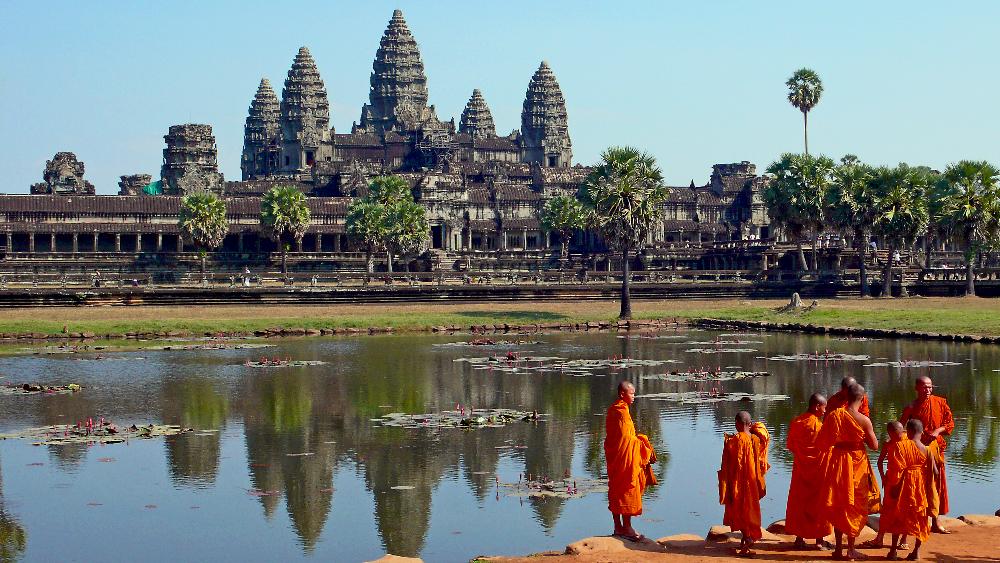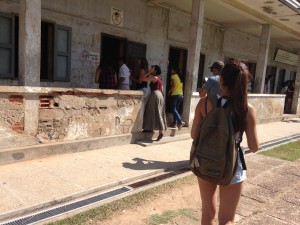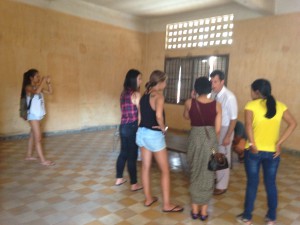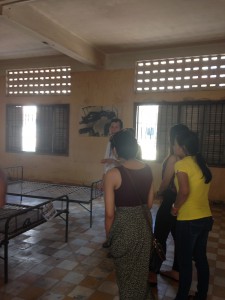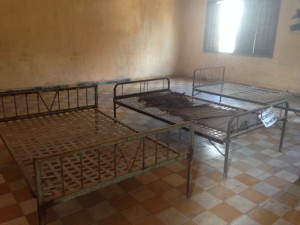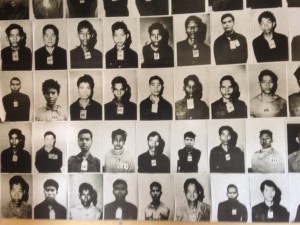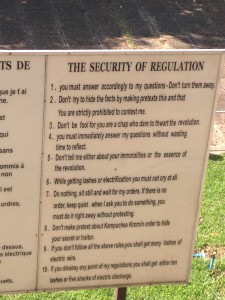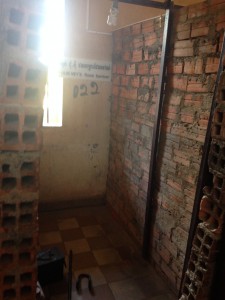On Wednesday afternoon, June 10th, we visited the notorious Khmer Rouge prison at Tuol Sleng, also known as S-21, located in the Capital of Phnom Penh. Two of our classmates from AUPP, Nicole and Sievlan, came along for their first visit also. Tuol Sleng was a high school that converted into a prison by the Khmer Rouge to torture and interrogate those considered to be enemies of the state. About 12,000 men, women and children were sent to S-21, accused of being Vietnamese spies, who were sent to Cambodia to sabotage the country’s rice farming. The prisoners were tortured till they confessed their crimes and gave the names of 5 other individuals who were supposed to be their associates. This was another motto of the Khmer Rouge, which was “to dig grass, you have to dig the root” meaning to destroy the enemy, you have to destroy all his family and friends, no matter how old or young they are. There were no factual evidence that any of these people were actual spies sent by the North Vietnamese government. In fact, many of the prisoners were Khmer Rouge cartels who were in charge of villages in each region. Since they could not make the 3 tonnes minimum of rice harvest, they were accused of conspiring with the enemies. Only 4 male adults and 4 children survived from this extermination center. All of the others were sent to be executed at Chhoeng Ek, also known as the Killing field, or died from starvation or the pains from being tortured. On January 7th, 1979, the Vietnamese forces finally reached Phnom Penh, and pushed the Khmer Rouge out, ended their almost 4 years rule. The KR guards quickly ran away but not after killing the last 14 remaining prisoners that they tortured. The bodies were found by the Vietnamese forces as they entered the prison, still lying and bleeding on the metal beds that held them down. The bodies are buried in the yard when the prison was made into a museum, for others to give respect. This prison was one of the atrocious acts that the Khmer Rouge had committed to its own people. 1.5 to 2 millions Cambodians died under the Khmer Rouge regime, due to starvation, diseases, long hours of hard labors, and execution. The museum is a reminder to the people of Cambodia of its darkest hours and to the rest of the world that such horrible events did happen and to never forget those who had lost their lives. Above all, it is to display the resilience of the Khmer people of how far they have come for the last 35 years. I have no doubt that the Cambodian people, especially the youth, have the potential to achieve more and move toward an even brighter future.
Phnom Penh, Cambodia: Special Topics in Southeast Asian Studies With UMass Lowell 2015
UMass Lowell Blog
